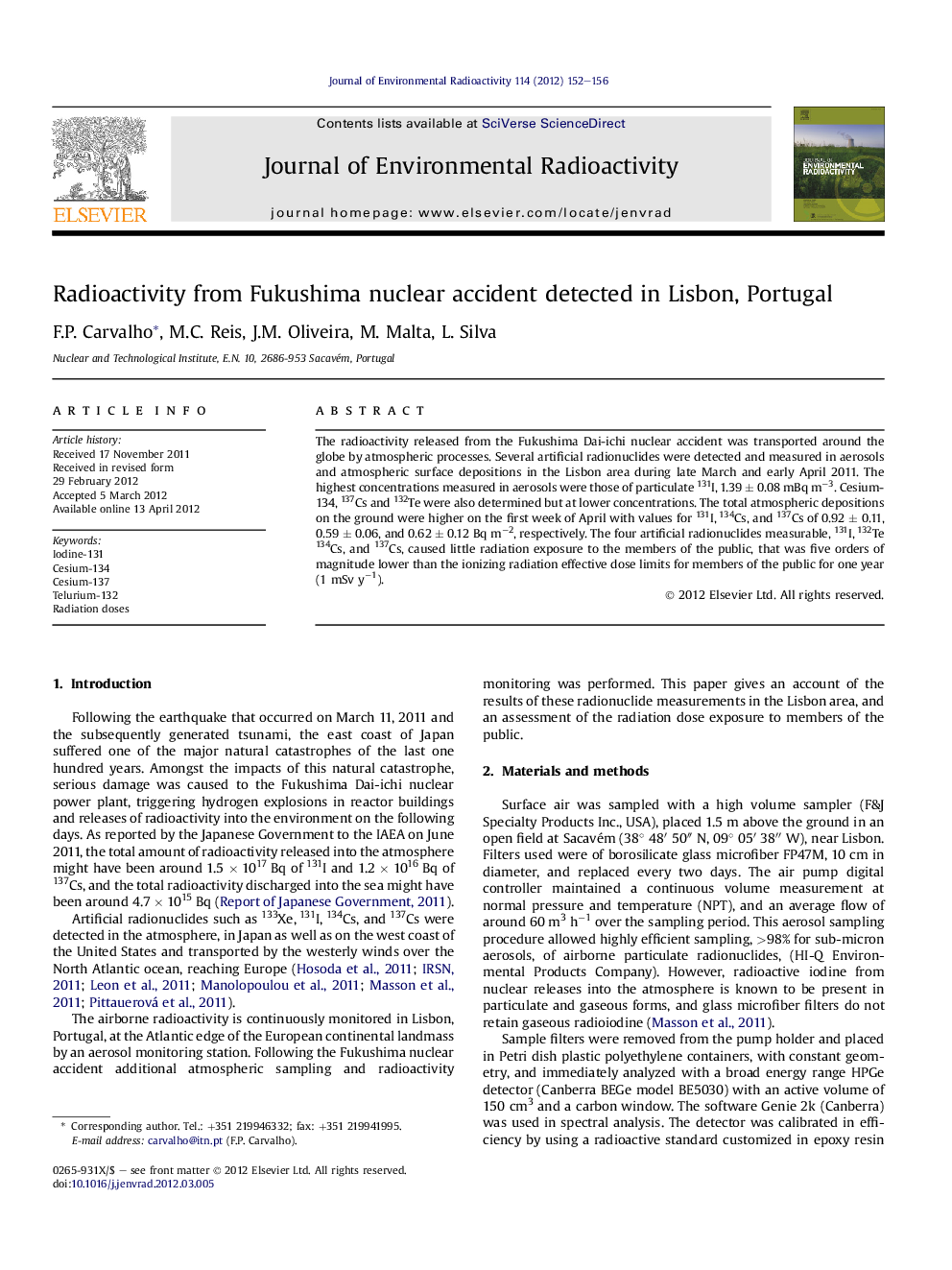| Article ID | Journal | Published Year | Pages | File Type |
|---|---|---|---|---|
| 1738339 | Journal of Environmental Radioactivity | 2012 | 5 Pages |
The radioactivity released from the Fukushima Dai-ichi nuclear accident was transported around the globe by atmospheric processes. Several artificial radionuclides were detected and measured in aerosols and atmospheric surface depositions in the Lisbon area during late March and early April 2011. The highest concentrations measured in aerosols were those of particulate 131I, 1.39 ± 0.08 mBq m−3. Cesium-134, 137Cs and 132Te were also determined but at lower concentrations. The total atmospheric depositions on the ground were higher on the first week of April with values for 131I, 134Cs, and 137Cs of 0.92 ± 0.11, 0.59 ± 0.06, and 0.62 ± 0.12 Bq m−2, respectively. The four artificial radionuclides measurable, 131I, 132Te 134Cs, and 137Cs, caused little radiation exposure to the members of the public, that was five orders of magnitude lower than the ionizing radiation effective dose limits for members of the public for one year (1 mSv y−1).
► Radionuclides from Fukushima nuclear accident were measured in aerosols at Lisbon, Portugal. ► Cesium-137 and iodine-131 were measured in atmospheric precipitation. ► Radiation dose to members of the public was much lower than dose limit of 1 mSv/y.
